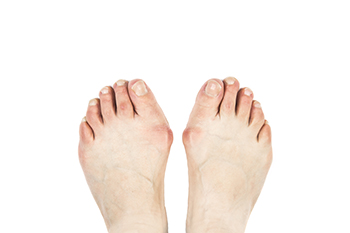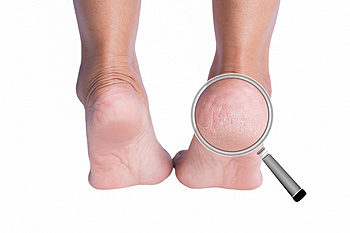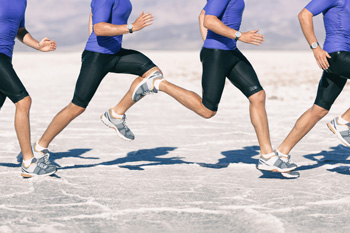Items filtered by date: February 2023
Pickleball Injuries to the Feet on the Rise

Pickleball has increased in popularity, and because of that, injuries related to this sport are on the rise. Pickleball is played on a small court with paddles and a perforated plastic ball. It calls for a lot of stop-and-start motions and bursts of energy. This increases the risk of injuries like ankle sprains, falls, and Achilles tendon strains. Because of the speed and force involved in pickleball games, many players develop plantar fasciitis, which is an overuse injury that causes inflammation of the band of tissue on the sole of the foot. Bruising of the heels is common, as are blisters on the feet. Proper footwear is an important way to limit both acute and chronic foot or ankle injuries caused by pickleball. Experts have recommended using cross training shoes, rather than running shoes, to improve the stability needed for rapid side-to-side movements. An ankle brace with straps or laces can also be used. It is also a good idea to warm up before starting a pickleball game and to rest if you experience pain. Custom orthotics may be needed for additional support. For more information about dealing with foot pain from pickleball, it is suggested that you consult a podiatrist.
Sports related foot and ankle injuries require proper treatment before players can go back to their regular routines. For more information, contact Shaun J. Limon, DPM and Lisa Griffith-Limon, DPM of Limons Foot & Ankle Care. Our doctors can provide the care you need to keep you pain-free and on your feet.
Sports Related Foot and Ankle Injuries
Foot and ankle injuries are a common occurrence when it comes to athletes of any sport. While many athletes dismiss the initial aches and pains, the truth is that ignoring potential foot and ankle injuries can lead to serious problems. As athletes continue to place pressure and strain the area further, a mild injury can turn into something as serious as a rupture and may lead to a permanent disability. There are many factors that contribute to sports related foot and ankle injuries, which include failure to warm up properly, not providing support or wearing bad footwear. Common injuries and conditions athletes face, including:
- Plantar Fasciitis
- Plantar Fasciosis
- Achilles Tendinitis
- Achilles Tendon Rupture
- Ankle Sprains
Sports related injuries are commonly treated using the RICE method. This includes rest, applying ice to the injured area, compression and elevating the ankle. More serious sprains and injuries may require surgery, which could include arthroscopic and reconstructive surgery. Rehabilitation and therapy may also be required in order to get any recovering athlete to become fully functional again. Any unusual aches and pains an athlete sustains must be evaluated by a licensed, reputable medical professional.
If you have any questions please feel free to contact our offices located in Bradenton and Lakewood Ranch, FL . We offer the newest diagnostic and treatment technologies for all your foot and ankle needs.
How Wide Feet Can Cause Pain

If you notice shoes that previously fit your feet seem tighter and more uncomfortable, especially in the midfoot area, you may have developed a splay foot. This condition is simply a widening of the feet as the metatarsals spread out. Wider feet can then contribute to fallen arches, resulting in pain. A simple way to find out if you have a splay foot is to look at your feet. One may also feel increased pain when walking or standing and a tendency to walk on the outside of the feet. This gait change may cause calluses because of the shift in weight distribution. A splay foot can also be noticed by a wearing down of the shoes on the outside edge. In some cases, hammertoes and other toe deformities may begin to appear. The exact cause of splay foot is up for debate, but many experts believe that obesity, the long-term wearing of high heels, and aging may be factors. Finding shoes that fit wider feet can help to reduce the effects of a splay foot. In addition, foot-strengthening exercises are thought to be the best way to overcome the symptoms. Please visit a podiatrist for more information and to learn the treatment option that is best for you.
Foot Pain
Foot pain can be extremely painful and debilitating. If you have a foot pain, consult with Shaun J. Limon, DPM and Lisa Griffith-Limon, DPM from Limons Foot & Ankle Care. Our doctors will assess your condition and provide you with quality foot and ankle treatment.
Causes
Foot pain is a very broad condition that could be caused by one or more ailments. The most common include:
- Bunions
- Hammertoes
- Plantar Fasciitis
- Bone Spurs
- Corns
- Tarsal Tunnel Syndrome
- Ingrown Toenails
- Arthritis (such as Gout, Rheumatoid, and Osteoarthritis)
- Flat Feet
- Injury (from stress fractures, broken toe, foot, ankle, Achilles tendon ruptures, and sprains)
- And more
Diagnosis
To figure out the cause of foot pain, podiatrists utilize several different methods. This can range from simple visual inspections and sensation tests to X-rays and MRI scans. Prior medical history, family medical history, and any recent physical traumatic events will all be taken into consideration for a proper diagnosis.
Treatment
Treatment depends upon the cause of the foot pain. Whether it is resting, staying off the foot, or having surgery; podiatrists have a number of treatment options available for foot pain.
If you have any questions, please feel free to contact our offices located in Bradenton and Lakewood Ranch, FL . We offer the newest diagnostic and treatment technologies for all your foot care needs.
Possible Relief From Cracked Heels

People who have cracked heels are often aware of how their feet look in flip flops, or other types of backless shoes. This condition can be unsightly, and it affects approximately 20 percent of people across the country. There are various reasons why cracked heels can develop. These can include standing on hard surfaces for much of the day and wearing shoes that do not support the heels. Additionally, there are certain medical ailments that may promote getting cracked heels, consisting of fungal infections and thyroid disorders. People who have psoriasis or specific vitamin deficiencies may be prone to getting this condition, and there are methods that can be implemented, which may help to prevent them. It is beneficial to wash and dry the feet thoroughly, followed by applying a good moisturizer on them. Wearing shoes that have a back may also help to stop the onset of cracked heels. For mildly cracked heels, some patients use a pumice stone that can exfoliate the dead skin. Severely cracked heels often require the expert advice of a podiatrist. If you have this condition, please contact this type of doctor who can prescribe medication for relief, if necessary.
If the skin on your feet starts to crack, you may want to see a podiatrist to find treatment. If you have any concerns, contact Shaun J. Limon, DPM and Lisa Griffith-Limon, DPM from Limons Foot & Ankle Care. Our doctors can provide the care you need to keep you pain-free and on your feet.
Cracked Heels
It is important to moisturize your cracked heels in order to prevent pain, bleeding, and infection. The reason cracked heels form is because the skin on the foot is too dry to support the immense pressure placed on them. When the foot expands, the dry skin on the foot begins to split.
Ways to Help Heal Them
- Invest in a good foot cream
- Try Using Petroleum Jelly
- Ease up on Soaps
- Drink Plenty of Water
Ways to Prevent Cracked Heels
- Moisturize After Showering
- Skip a Shower
- Keep Shower Water Lukewarm
- Don’t Scrub Your Feet
If you are unsure how to proceed in treating cracked heels, seek guidance from a podiatrist. Your doctor will help you with any questions or information you may need.
If you have any questions, please feel free to contact our offices located in Bradenton and Lakewood Ranch, FL . We offer the newest diagnostic and treatment technologies for all your foot care needs.
Do You Know How the Foot Works?

Walking seems so simple and is taken for granted by most of us. We do not think that with each step we take, there is a complex set of actions required by our unique arrangement of bones, tendons, and ligaments that are put into motion. The main tendon that is required to move the foot is the Achilles tendon. This tendon connects the calf muscle to the hindfoot bone. Ligaments are bands of elastic tissue that are between bones. To move, muscles require stimulation from nerves that feed into the foot. The plantar fascia, the connective tissue running along the bottom of the foot, acts as a springboard for stepping. The largest bone in the foot, which is known as the calcaneus, forms the heel bone and is vital for foot balance and strength. The forefoot’s five metatarsal bones lead to the phalanges that make up the toes of the foot. Few people have knowledge of how our feet work to get us from place to place, but everything is put together to make this happen smoothly. Most of us only learn some of the biomechanics of the feet when something goes amiss. If you would like to learn more about how feet are put together and function, make an appointment with a podiatrist who can answer any questions you may have.
If you have any concerns about your feet, contact Shaun J. Limon, DPM and Lisa Griffith-Limon, DPM from Limons Foot & Ankle Care. Our doctors can provide the care you need to keep you pain-free and on your feet.
Biomechanics in Podiatry
Podiatric biomechanics is a particular sector of specialty podiatry with licensed practitioners who are trained to diagnose and treat conditions affecting the foot, ankle and lower leg. Biomechanics deals with the forces that act against the body, causing an interference with the biological structures. It focuses on the movement of the ankle, the foot and the forces that interact with them.
A History of Biomechanics
- Biomechanics dates back to the BC era in Egypt where evidence of professional foot care has been recorded.
- In 1974, biomechanics gained a higher profile from the studies of Merton Root, who claimed that by changing or controlling the forces between the ankle and the foot, corrections or conditions could be implemented to gain strength and coordination in the area.
Modern technological improvements are based on past theories and therapeutic processes that provide a better understanding of podiatric concepts for biomechanics. Computers can provide accurate information about the forces and patterns of the feet and lower legs.
Understanding biomechanics of the feet can help improve and eliminate pain, stopping further stress to the foot.
If you have any questions please feel free to contact our offices located in Bradenton and Lakewood Ranch, FL . We offer the newest diagnostic and treatment technologies for all your foot and ankle needs.


